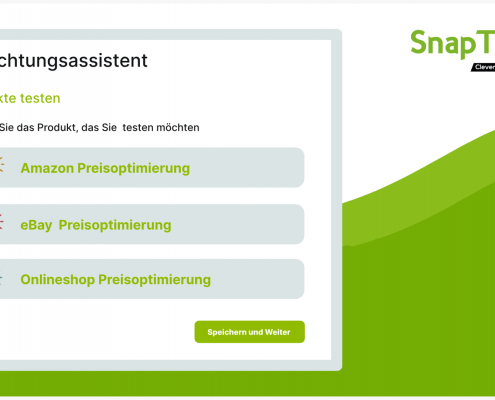Amazon KPIs: The most important key figures for marketplace sellers

Business decisions are primarily influenced by one thing – numbers, numbers, numbers. Whole processes are reduced to mathematical sizes and ultimately guided by them. Certain key figures provide information about the product and sales performance and which adjusting screws still need to be turned in order to improve the result. Amazon sellers in particular are still too happy about growing sales – instead of paying attention to what is left on the bottom line. Only those who have all the costs of a product fully under control can validly determine which products are real bestsellers – and which the seller is adding. In the following blog post we examine the most important key figures that every Amazon seller needs to know in order to perform successfully on Amazon.
… but what is a KPI anyway?
The acronym KPI stands for Key Performance Indicator and can be translated with the word key performance indicator. A KPI thus provides information about the fulfillment of a certain goal or a situation. While some KPIs are output in absolute terms (e.g. the number of conversions), others can also be relative values. Especially at the strategic level, i.e. in the long term, monetary KPIs are likely to have the greatest relevance. But not all of them are directly related to financial variables.
Which KPIs are required for monitoring on Amazon?
It is clear that if you want to sell successfully on Amazon, you have to constantly optimize products, prices, advertising campaigns or processes. Especially in times of increasing competitive pressure, driven by a continuously growing number of dealers, the seller’s optimization clock must never stand still. While the retailer can use individual KPIs as an indicator of his company’s success, on Amazon, relevant KPIs are often specified by Amazon itself. Anyone who ignores these key performance indicators has no chance of ranking high with their products, and certainly not, ever Win a BuyBox .
You too can increase your BuyBox quota without much effort! Our BuyBox-MAX strategy determines the optimal price and ensures that the BuyBox is won.
Retailers have the best chances of top placement and sustainable success if they know the KPI metrics provided by Amazon and optimize their business accordingly. So that retailers never lose sight of the most important KPIs, such as click rate, conversion rate and sales, they can be accessed via the seller central under the point “ Customer satisfaction “be monitored at all times. In the following, we will tell you which metrics every seller needs to know, which performance targets apply to Amazon sellers and how the all-important seller performance is measured.
Metrics for measuring seller performance
Customer satisfaction
It is well known that customer satisfaction is the most important key figure in retail and therefore the basis for every successful seller. The key figures relating to customer satisfaction on the marketplace are therefore examined in order to assess how good the respective seller is on Amazon. The rate of order defects shows a percentage of negative order ratings. The number of these evaluations enables an overall assessment of the performance.
- Order Defect Rate = Order Defect Rate includes orders that received a negative review, an A-to-Z request, or a credit card refund. These factors form the basis for an overall assessment of the order deficiency rate. Ratings with one or two stars are considered negative. Good customer support can prevent most A-to-Z requests. The ideal value of the order defect rate should never exceed 1%.
Compliance with guidelines
In order for merchants to sell on Amazon, they must comply with sales performance requirements and guidelines. Massive violations are sometimes punished by Amazon blocking the merchant account. As a result of a blocking, the sellers are asked to submit a plan of action to the marketplace operator. Anyone who violates the guideline risks blocking his seller account, so fair traders are protected by Amazon’s measure.
Shipping performance
It is essential that an order from the retailer is always dispatched on time. The seller should confirm the order by the estimated shipping date so that customers can track the delivery status of their orders at any time. If the dispatch of an order is confirmed too late, this has a negative effect on the seller. According to the guidelines, sellers must keep the rate of late deliveries and cancellations as low as possible.
- Cancellation rate before fulfillment = The pre-fulfillment cancellation rate is the number of orders that were canceled by the seller prior to confirmation of shipment, divided by the number of orders in the relevant period. When calculating this key figure, all cancellations are included, regardless of the reason for them. The optimal guideline value for the cancellation rate should of course be at best 0% and in no case exceed 2.5%.
- Late delivery rate = The late delivery rate is the number of orders that were confirmed to be shipped after the estimated shipping date divided by the number of orders in the period in question. In most cases, late deliveries negatively affect the customer’s buying experience, which is why the rate should be kept as low as possible. Again, the rate should be at best 0% and never exceed 4%.
Performance review process
Amazon checks the relevant key figures at regular intervals and contacts sellers who do not meet the requirements. As a rule, Amazon grants a period of 60 days so that the sellers can measurably improve their key figures. In the event of particularly poor performance, Amazon reserves the right to withdraw the seller’s right to sell immediately. In this case, the seller is obliged to set up an action plan for the Amazon seller performance team and to clearly demonstrate how the performance should be increased.
Conclusion
If you keep an eye on these listed KPIs, you are always in a position to react to developments in the key figures and to initiate suitable actions on a case-by-case basis. An important prerequisite for this is that you have previously defined two to three relevant benchmarks for your products. Because these form the basis for continuous monitoring. You will now surely notice how complex the topic of controlling your online business on the marketplace is. There are quite a few KPIs that must be kept in mind for a successful sale on Amazon. Because if you don’t know where the fault is in the system, you will hardly be able to optimize your business in good time. And you should pay attention to this, because the consequence can not only be a downgrade in the ranking or the loss of the BuyBox be – an account lock is a very realistic prospect. With SnapTrade from SnapSoft, elementary parameters can not only be monitored on Amazon, but strategies can also be developed and fully automated on the basis of these. Get to know our repricing software and its professional features today, secure your place in the BuyBox and know your key figures.










